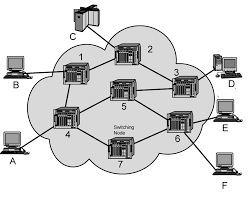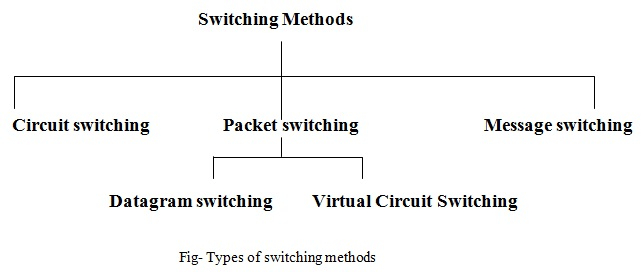
 Data Structure
Data Structure Networking
Networking RDBMS
RDBMS Operating System
Operating System Java
Java MS Excel
MS Excel iOS
iOS HTML
HTML CSS
CSS Android
Android Python
Python C Programming
C Programming C++
C++ C#
C# MongoDB
MongoDB MySQL
MySQL Javascript
Javascript PHP
PHP
- Selected Reading
- UPSC IAS Exams Notes
- Developer's Best Practices
- Questions and Answers
- Effective Resume Writing
- HR Interview Questions
- Computer Glossary
- Who is Who
What is switching and the types of switching techniques?
Switching is a technique of transferring the information from one computer network to another computer network.
Let us discuss about switching in step by step manner as follows −
Step 1 − In a computer network the switching can be achieved by using switches.
Step 2 − A switch is a small piece of hardware device that is used to join multiple computers together with one local area network (LAN).
Step 3 − These are devices which are helpful in creating temporary connections between two or more devices that are linked to the switch.
Step 4 − Switches are helpful in forwarding the packets based on MAC addresses.
Step 5 − By verifying the destination address to route the packet a Switch is used to transfer the data only to the device that has been addressed.
Step 6 − It will operate in full duplex mode.
Step 7 − It works with limited bandwidth, so it does not broadcast the message.
The diagram given below depicts the switching technique −

Advantages
The advantages of switching are as follows:
The bandwidth of the network increases with the help of a switch.
It tries to reduce the workload on individual PCs because it always sends the information to specified addressed devices.
It increases the overall performance of the network by reducing the traffic on the network.
There will be less frame collision because; switch creates the collision domain for each connection.
Disadvantages
The disadvantages of switching are as follows −
A Switch is more expensive than network bridges.
It cannot determine the network connectivity issues easily.
The proper designing and configuration of the switch are required to handle multicast packets.
Types of Switching Techniques
The different types of switching techniques are depicted below −

Let us understand all these techniques.
Circuit Switching
In circuit switching a path will be set-up before the transmission of the data. Now the data follows the path specified.
For example, telephone lines.
Packet Switching
The data packets will contain the source and destination addresses. Every router in between will check the destination address, select the next router to which the packet should be forwarded and send it via an appropriate path. As there is no path specified, different packets may follow different paths.
Virtual circuit packet switching
This is a mix of both packet and circuit switching. A path will be set-up logically i.e. no physical path will be set-up. Packets always follow this logical path. Therefore, these are the advantages of both packet and circuit switching.
Message Switching
A message is transferred as a complete unit and that is routed through intermediate nodes at which it is stored and forwarded.

